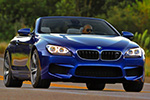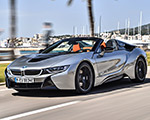BMW and Formula One have an inextricable history. Most frequently, the relationship gets reduced to BMW’s history of supplying engines. Far from an unfair categorization. But there’s another way BMW “supplied” Formula One in the early 2000s: Formula BMW. A separate entity with previously limited OEM involvement (although BMW did supply engines), the OEM took the reigns with sights set on developing even better drivers.
Formula BMW: Rapid Changes and New Faces
As we mentioned, Formula BMW already got its engines straight from the mothership. With BMW Motorsport’s intervention in 2001, things changed a bit. BMW now provided entire cars for the series. Secondly, the automaker reconfigured how the ADAC (Allgemeiner Deutscher Automobil Club, literally “General German Automobile Club”) worked. It prioritized drivers aged 15 or older with no international racing experience other than karting.
The Formula BMW program is touted by BMW as being “far more than simply a step up from karting.” Formula BMW gave drivers access to unique education opportunities that other junior racing series didn’t. A physical fitness coach, PR training and access to factory drivers and F1 bosses made Formula BMW stand out. A real paddock — complete with a hospitality tent for socialization, eating, and entertaining — gave Formula BMW an even more authentic feel. “It really set a new benchmark in terms of what a junior race series could provide,” Alex Schmuck, who was Formula BMW USA Motorsport Manager.
Crossing the Pond
After two years, BMW began eying the UK and US markets. Formula BMW USA became a thing, debuting at the Long Beach Grand Prix on April 13, 2003. The program represented an opportunity for younger drivers to get behind the wheel of something more akin to a real F1 car, as BMW’s ADAC rides pushed the boundaries for the class. Carbon-Kevlar and composite tubs were used along with a Motorsport-derived seat. Weighing just over 1,000 pounds, the 140-horsepower four-cylinder motorcycle engine mounted behind the driver was more than enough for motivation. But, of course, these advancements came at a price. BMW themselves estimated costs for a typical driver to be around $200,000 per race season, significantly more than other junior race series.
While a tough sell, BMW did manage to snag some big fish. Bobby Rahal, who likely needs no introduction, and Tom Milner, who ran a factory-backed M3 in the American Le Mans Series, were onboarded, which might have cajoled other smaller teams to get involved. Further blessings came from a sanctioning deal with Championship Auto Racing Teams, or CART, the then-leaders of open-wheel racing. Even Roger Penske and Rick Hendrick, dealership and race team owners, got involved, purchasing cars but allowing BMW to pick the driver.
Formula BMW’s End
From the series debut at Lime Rock in 2004 until the final races of the series in 2009 — when it was then known as Formula BMW Americas to indicate the inclusion of a new race weekend added in Mexico — Formula BMW shaped a generation of F1 drivers and hopefuls. All races eventually led to a global series that pit the best from everywhere against each other. Winners got to test out a full-fledged F1 car.
The program developed several drivers that later ended up on the F1 grid, including Nico Rosberg, a future F1 world champion, and Ho-Pin Tung who raced with both Williams and Sauber BMW teams. Ultimately, 2009 saw the end of Formula BMW as the global recession worsened and BMW pulled out of all Formula One efforts.















































































